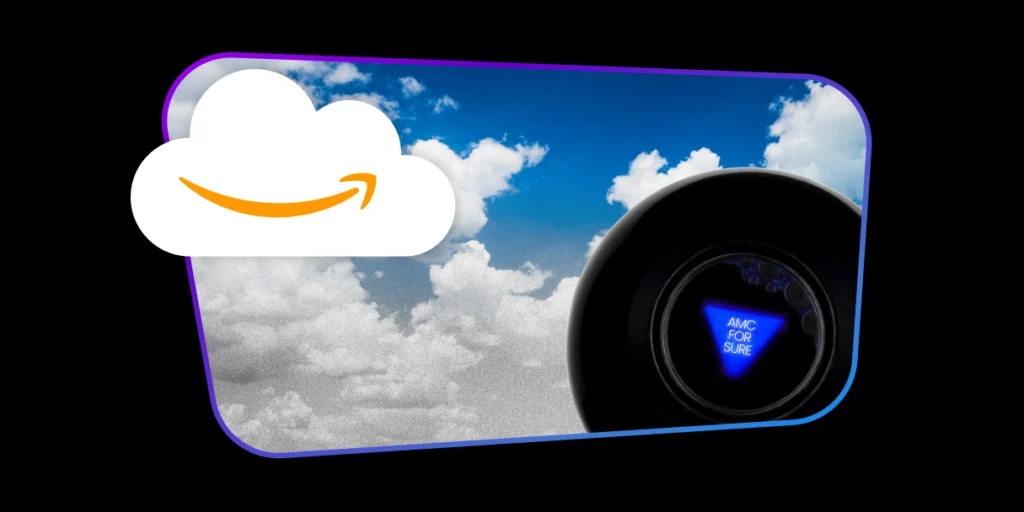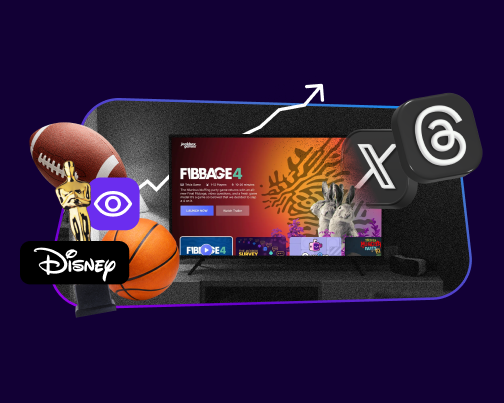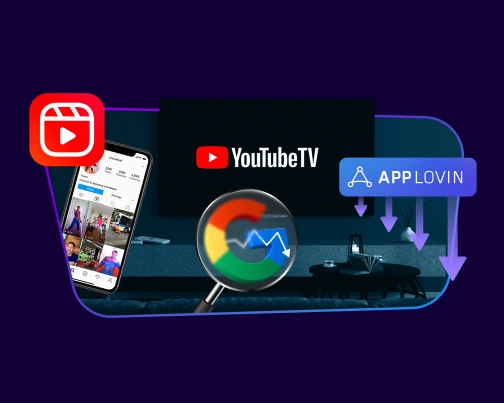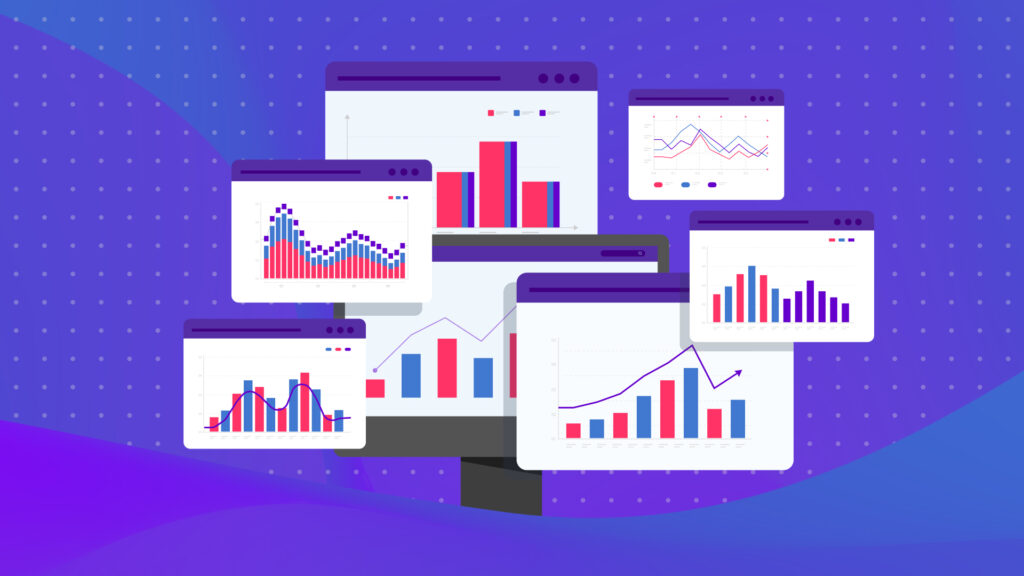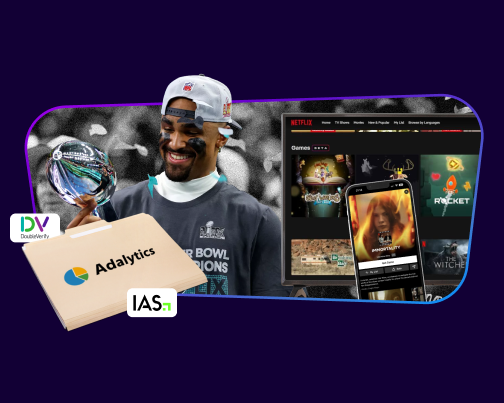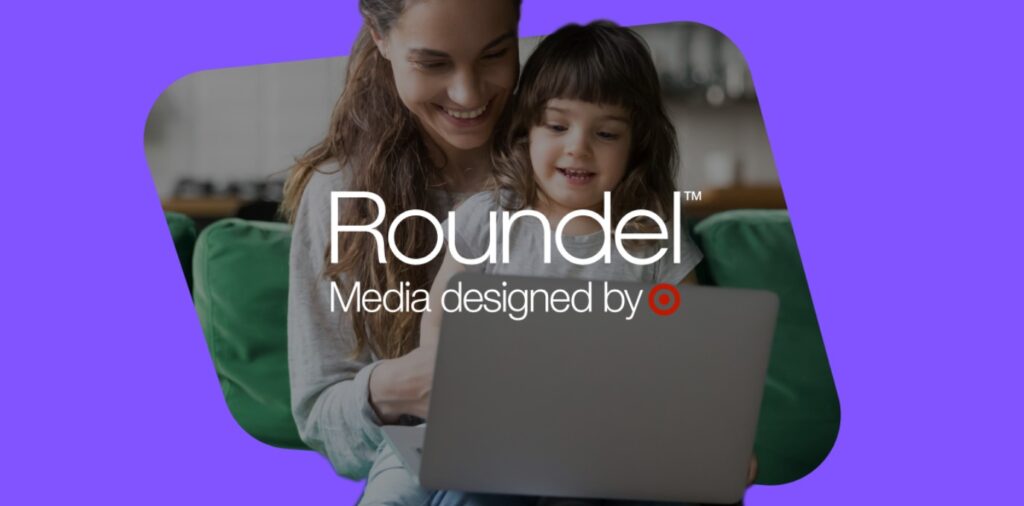This year, Google and Facebook are projected to claim half of all ad revenue worldwide.
Unfortunately, many advertisers still aren’t taking advantage of both platforms.
AdWords fans may think most Facebook ads don’t offer measurable returns, while Facebook advertisers don’t see the value in old-fashioned AdWords.
Both sides are missing the big picture and even bigger profits.
Shoppers rarely buy in a linear format—they bounce around to multiple channels. And like it or not, those frequently include social and search.
Read Now: HYLETE Lifts Revenue by+367.9% With Facebook Prospecting Ads
Just take a look at a shopper’s path to purchase in the example below.

(Psst…You can follow this path to find your own conversion paths in Google Analytics: Conversions>Multi Channel Funnels>Assisted Conversions>Top Conversion Paths>Secondary Dimension= “Source/Medium”)
Advertisers are finally starting to understand how flawed a last-click mentality is, but it’s time to take it further to understand how search and social both bring something valuable to the table.
To boil it down into simple terms:
- Facebook: Lower conversion rate, more prospects
- AdWords: Higher conversion rate, fewer prospects
Today, we’ll cover how audience prospecting on Facebook directly impacts your AdWords ROI, how AdWords campaigns convert your Facebook audience, and how to take advantage of both ad platforms for a greater overall return.
On Google? Here’s Why You Should Invest in Facebook
Facebook Offers: Lower conversion rate, more prospects
Facebook’s ads can roughly be drawn into two categories: Retargeting and prospecting.
Retargeting is an easy sell. At CPC Strategy, we recommend every ecommerce client starts with Dynamic Ads to retarget shoppers who have previously performed an action on your website.
Unfortunately, the value of prospecting is more difficult to prove because you’re advertising to “cold leads”. Many advertisers try Facebook prospecting ads, only to abandon them because on the surface, the return doesn’t compare to AdWords.
We set out to prove that idea wrong.
How Facebook Prospecting Ads Impact Google AdWords Efforts
Many of our team members had hunches that prospecting ads on Facebook had an impact on AdWords even before we were able to prove it.
“When a new audience is exposed to brand on Facebook, they may not engage with the ad at that moment, but they’re more likely to remember the brand and reach the website later through Google,” says Lewis Brannon, Paid Search Manager at CPC Strategy.
The Theory
It’s difficult to prove the efficacy of Facebook prospecting ads because those numbers get obscured in AdWords branded text ad campaigns.
The Case Study
We started by selecting a client running both Facebook prospecting ads and Google ads. This particular electronics company saw a lot of success early on Google AdWords due to existing demand for their product.
Lower funnel ads were working great—until they weren’t, and we hit a point of diminishing returns. (As many advertisers learn the hard way, spending more on Google doesn’t mean you’ll get a bigger return.)
Lower funnel ads were working great—until they weren’t.
“We needed to find a way to go beyond demand fulfillment, and reach new customers,” says Adam Harms, Retail Search Manager at CPC Strategy.
Harms turned to Facebook and did the following:
- Built Lookalike audiences based on previous shoppers
- Tailored ad creative to specific affinity groups
- Set up ad types including slideshow videos w/captions, regular video, and carousel ads
Later, Harms ran a test compiling both AdWords and Facebook data.
The results were pretty dramatic:
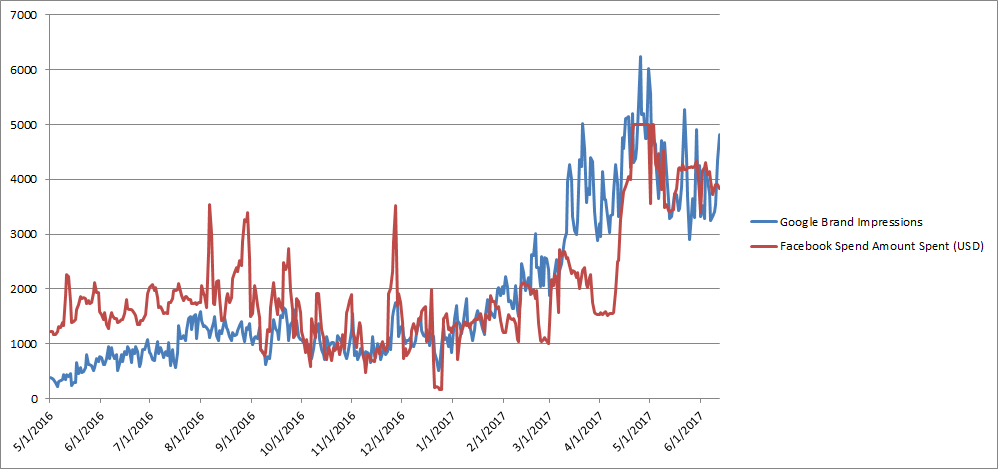
“As we increased spend on Facebook prospecting, we saw significantly more branded impressions,” says Harms.
We weren’t the only ones seeking to prove a search + social connection. Facebook also invested in their own study:
People exposed to Facebook ads were significantly more likely to search for more cost-effective branded keywords and, in some cases, less likely to search for more expensive unbranded keywords.
Now, let’s look at the flipside. If you’re on Facebook, why do you need AdWords?
On Facebook? Here’s Why You Should Invest in AdWords
AdWords Offers: Higher conversion rate, fewer prospects
If you’re prospecting and selling products on Facebook as your main channel, and you’re not considering investing in AdWords, you’re going to miss out.
“On Facebook, you’re generating a lot of interest–whether it’s a Facebook page or great content,” says Sarah Rogers, Manager of Performance Social at CPC Strategy. “However, Facebook isn’t going to be more main revenue driver. The real benefit to Facebook is it builds up all of your other marketing channels. Google is the low hanging fruit here.
While Google AdWords also offers the ability to retarget site visitors and build audiences (like Facebook), its main strength is in closing the deal via Search and Shopping.
Start answering branded, low-funnel queries and capture shoppers with their cards out.
“Google can capture the demand Facebook generates, says Rogers.
We’d all love it if shoppers opted to buy directly from our site or moved down the buyer funnel we carefully created. Unfortunately, that’s not the way any of us shop.
Even if you don’t want to be on Amazon or Google, you can bet your audience is probably there. And if you don’t show up where they prefer to shop, they may settle on a competitor’s product.
Even if you don’t want to be on Amazon or Google, your audience is.
If you’re seeking to build a brand, it’s especially important to show up on top Google branded search queries.
Brannon explains:
If someone sees an ad for your product on Facebook, they may not feel sure it’s a good idea to click through Facebook to your site. Instead, they may turn to Google to verify you are a legitimate brand. If you don’t show up on Google, it’s a red flag to that shopper.
Rogers may be the head of our Facebook advertising department, but she’s a firm believer in a multi-channel strategy that includes AdWords.
Again, as we mentioned before, you may notice the ROI on AdWords is superior to Facebook’s, but this isn’t a sign that Facebook isn’t working.
“The return from Google is always going to be higher than Facebook,” says Rogers. “That’s not because your Facebook ad strategy sucks, it’s because it’s a social site where you’re generating demand. If people are searching for you on Google and you’re not there, you’re missing out.
Even if you just dabble in Google AdWords, you should own your branded terms to capture demand that’s already there. While you go to Facebook to expand your audience, know that many people are going to try to find you on Google.
Take Action: Combine Facebook + AdWords Strategies
1. Start With Facebook Dynamic Ads (Pixel + Product Feed Required)
As we stated before, we typically recommend ecommerce retailers start with Dynamic Ads.
They’re powerful, conversion-centered, and simply require your product feed and a working Pixel on your site.
“If your Dynamic Ads aren’t performing well, it’s a strong indicator that prospecting won’t be very successful,” says Casey Edwards, Social Marketing Manager at CPC Strategy. “Capture that traffic that is already familiar with your brand, and then move on to new customer acquisition.”
Once you do get your new visitors on your site from Facebook prospecting efforts, you can retarget them with Dynamic Ads featuring pages they visited or objects they abandoned in the cart to close that sale.
Learn more about Dynamic Ads in our popular FREE guide:
2. Use AdWords Data to Inform Facebook Audience Targeting
Not sure where to start with Facebook audience building beyond the Pixel and your own CRM Lookalikes?
Leverage your AdWords data to reach new audiences and target ads effectively. Here are a few parts of AdWords data that may prove useful to you, depending on your brand:
- Aggregate times of the week
- Gender
- Household income
All of the above can put your brand on the radar of shoppers than you wouldn’t have reached otherwise, and it’s far less risky than guessing when building your Facebook affinity audiences.
3. Use Google Non-Branded Queries to Create Demand on Facebook
Build Facebook audiences based on the top-performing non-branded terms on Google.
For instance, if you sell wallets, you can target terms such as “canvas wallet” in your AdWords campaigns, then see what other keywords emerge.
Once you’ve gathered enough data, build audiences on Facebook that have some connection to that term. (We don’t know how Facebook determines this, but it’s likely based on past conversations or ads they’ve engaged with.)
One caveat: Don’t expect this strategy to pay off right away.
“Don’t expect the best ROI on a non-branded term, because that audience has never heard of you,” says Brannon. “What you are trying to do is turn non-branded purchases into repeat purchasers; focusing on Customer Lifetime Value (CLV).”
4. Retarget Facebook Referrals on Google
Create an RLSA audience in AdWords for people who have visited your site from a Facebook ad, then target them lower in the funnel on Google.
This is particularly effective for recapturing past purchasers. We’ve tested this with several of our clients, and we’ve seen great results, but it does depend on your product. Seasonality and other factors will always come into play.
Conclusion
No agency can promise they fully understand what every shopper wants and how every business should advertise online. (And if they do, you’re probably looking at the wrong agency.)
However, we are firm believers in these two channels. They’re far more powerful together than they are on their own.
We’re looking forward to the day when a multi-channel strategy is the norm, and it’s easier to see the connection across platforms.
Until then, examine the ROI on both of these channels side-by-side, and watch your sales grow.
You Might Be Interested In


